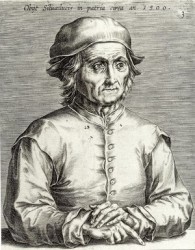
Van Camp 1954
“Autonomie de Jérôme Bosch et récentes interprétations de ses oeuvres” (Gaston Van Camp) 1954
[in: Bulletin Koninklijke Musea voor Schone Kunsten Brussel, vol. 3, nr. 4 (December 1954), pp. 131-148]
[Also mentioned in Gibson 1983: 146 (G69)]
The art of Bosch has a high degree of autonomy, as far as technique, composition and iconography are concerned. The chronological subdivision of this oeuvre in three periods (youth, middle period and late period) by Tolnay seems acceptable. Bosch’s landscapes as a whole are a product of the painter’s imagination but the different parts look very natural. Bosch was one of the first creators of the psychological landscape. Also his use of colours is original: one example is his use of whites to mould his subjects.
Van Camp then focuses on the recent interpretations of Wilhelm Fraenger. They have been criticized a lot, by Bax among others. Some of Bax’ interpretations are indeed very plausible, others are more risky. Recently Brand Philip (see Brand Philip 1953) has recognized the Jewish Messiah in the figure in the background of the central panel of the Prado Epiphany: a thesis that seems hard to refute.
It is often said that the bizarre in Bosch’s art is generated by a new symbolism and a new iconography. This is obvious, but why did Bosch introduce this aspect?
[explicit]